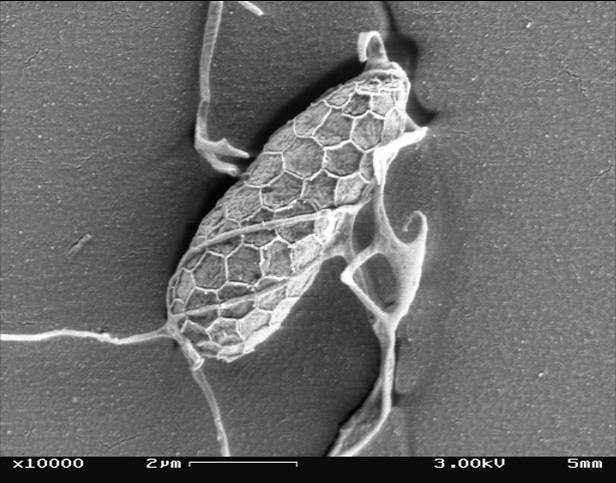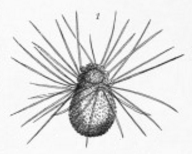|
Slopalinida
Slopalinida is a heterokont The stramenopiles, also called heterokonts, are protists distinguished by the presence of stiff tripartite external hairs. In most species, the hairs are attached to flagella, in some they are attached to other areas of the cellular surface, an ... order. See also * David J. Patterson References Placidozoa Stramenopile orders {{heterokont-stub ... [...More Info...] [...Related Items...] OR: [Wikipedia] [Google] [Baidu] [Amazon] |
Opalinea
The opalines are a small group of peculiar heterokonts, currently assigned to the family Opalinidae, in the order Slopalinida. Their name is derived from the opalescent appearance of these microscopic organisms when illuminated with full sunlight. Most opalines live in the large intestine and cloaca of anurans (frogs and toads), though they are sometimes found in fish, reptiles, molluscs and insects; whether they are parasitic is not certain. The unusual features of the opalines, first observed by Antonie van Leeuwenhoek in 1683, has led to much debate regarding their phylogenetic position among the protists. Taxonomy and phylogeny The relationship between opalines and other protists has been a subject of great controversy since the late 19th century, and is not completely resolved at present. Initially, microscopists believed that the thousands of rhythmically beating hair-like structures which cover their surface were cilia, and they placed the opalines in Ciliophora. In ... [...More Info...] [...Related Items...] OR: [Wikipedia] [Google] [Baidu] [Amazon] |
Heterokonta
The stramenopiles, also called heterokonts, are protists distinguished by the presence of stiff tripartite external hairs. In most species, the hairs are attached to flagella, in some they are attached to other areas of the cellular surface, and in some they have been secondarily lost (in which case relatedness to stramenopile ancestors is evident from other shared cytological features or from genetic similarity). Stramenopiles represent one of the three major clades in the SAR supergroup, along with Alveolata and Rhizaria. Stramenopiles are eukaryotes; most are single-celled, but some are multicellular including some large seaweeds, the brown algae. The group includes a variety of algal protists, heterotrophic flagellates, opalines and closely related proteromonad flagellates (all endobionts in other organisms); the actinophryid Heliozoa, and oomycetes. The tripartite hairs characteristic of the group have been lost in some of the included taxa – for example in most di ... [...More Info...] [...Related Items...] OR: [Wikipedia] [Google] [Baidu] [Amazon] |
Heterokont
The stramenopiles, also called heterokonts, are protists distinguished by the presence of stiff tripartite external hairs. In most species, the hairs are attached to flagella, in some they are attached to other areas of the cellular surface, and in some they have been secondarily lost (in which case relatedness to stramenopile ancestors is evident from other shared cytological features or from genetic similarity). Stramenopiles represent one of the three major clades in the SAR supergroup, along with Alveolata and Rhizaria. Stramenopiles are eukaryotes; most are single-celled, but some are multicellular including some large seaweeds, the brown algae. The group includes a variety of algal protists, heterotrophic flagellates, opalines and closely related proteromonad flagellates (all endobionts in other organisms); the actinophryid Heliozoa, and oomycetes. The tripartite hairs characteristic of the group have been lost in some of the included taxa – for example in most ... [...More Info...] [...Related Items...] OR: [Wikipedia] [Google] [Baidu] [Amazon] |
Eukaryota
The eukaryotes ( ) constitute the Domain (biology), domain of Eukaryota or Eukarya, organisms whose Cell (biology), cells have a membrane-bound cell nucleus, nucleus. All animals, plants, Fungus, fungi, seaweeds, and many unicellular organisms are eukaryotes. They constitute a major group of Outline of life forms, life forms alongside the two groups of prokaryotes: the Bacteria and the Archaea. Eukaryotes represent a small minority of the number of organisms, but given their generally much larger size, their collective global biomass is much larger than that of prokaryotes. The eukaryotes emerged within the archaeal Kingdom (biology), kingdom Asgard (Archaea), Promethearchaeati and its sole phylum Promethearchaeota. This implies that there are only Two-domain system, two domains of life, Bacteria and Archaea, with eukaryotes incorporated among the Archaea. Eukaryotes first emerged during the Paleoproterozoic, likely as Flagellated cell, flagellated cells. The leading evolutiona ... [...More Info...] [...Related Items...] OR: [Wikipedia] [Google] [Baidu] [Amazon] |
SAR Supergroup
SAR is a highly diverse clade of eukaryotes, often considered a supergroup, that includes stramenopiles (heterokonts), alveolates, and rhizarians. It is a node-based taxon (under the Sar name), including all descendants of the three groups' last common ancestor, and comprises most of the now-rejected Chromalveolata. Their sister group has been found to be telonemids, with which they make up the TSAR clade. Harosa is sometimes used synonymously with TSAR. Etymology The name SAR is an acronym derived from the first letters of its three constituent clades; it has been alternatively spelled RAS. The term Harosa (at the subkingdom level) has also been used, with Stramenopiles replaced by its synonym Heterokonta in this variant of the acronym. History of discovery Before the discovery of the SAR supergroup, stramenopiles and alveolates were classified in the supergroup Chromalveolata alongside haptophytes and cryptomonads, being believed to have acquired plastids th ... [...More Info...] [...Related Items...] OR: [Wikipedia] [Google] [Baidu] [Amazon] |
Placidozoa
Placidozoa is a recently defined non-photosynthetic lineage of Stramenopiles. Phylogeny In 2016, Philippe Silar presented the following phylogeny for the Placidozoa: Taxonomy Infraphylum Placidozoa Cavalier-Smith 2013 * Superclass Wobblata Cavalier-Smith 2006 stat. n. 2013 (paraphyletic) ** Class Placididea Moriya, Nakayama & Inouye 2002 *** Order Placidida Moriya, Nakayama & Inouye 2002 lacidae Cavalier-Smith 2006**** Family Placidiaceae Moriya, Nakayama & Inouye 2002 ***** Genus '' Pendulomonas'' Tong 1997 ***** Genus ''Placidia Placidia () was a 5th-century Roman noblewoman and briefly empress in the Western Roman Empire. Her father was Valentinian III, Roman emperor in the West from 425 to 455. In 455, shortly after her marriage to Olybrius, she was captured by Gaiser ...'' Moriya, Nakayama & Inouye 2002 ***** Genus '' Wobblia'' Moriya, Nakayama & Inouye 2000 ***** Genus '' Allegra'' Rybarski et al. 2015 ** Class Nanomonadea Cavalier-Smith 2013 *** Order Unici ... [...More Info...] [...Related Items...] OR: [Wikipedia] [Google] [Baidu] [Amazon] |
David J
David John Haskins (born 24 April 1957, Northampton, Northamptonshire, England), better known as David J, is a British alternative rock musician, producer, and writer. He is the bassist for the gothic rock band Bauhaus (band), Bauhaus and for Love and Rockets (band), Love and Rockets. He has composed the scores for a number of plays and films, and also wrote and directed his own plays, ''Silver for Gold (The Odyssey of Edie Sedgwick)'', in 2008, which was restaged at REDCAT in Los Angeles in 2011, and ''The Chanteuse and The Devil's Muse'' in 2011. His artwork has been shown in galleries internationally, and he has been a resident DJ at venues such as the Knitting Factory. David J has released a number of singles and solo albums, and in 1990 he released one of the first No. 1 hits on the then nascent Modern Rock Tracks charts, with "I'll Be Your Chauffeur". His most recent single, "The Day That David Bowie Died" entered the UK vinyl singles chart at number 4 in 2016. The trac ... [...More Info...] [...Related Items...] OR: [Wikipedia] [Google] [Baidu] [Amazon] |



